The Challenge
Bring all smart home features into one system
Founding Vision and Mission
Veev is a building technology company founded in 2008 by two ambitious entrepreneurs from Israel who wanted to improve how homes are built and solve the housing shortage problem in the US.
Innovative Construction Approach
Their construction approach is all about efficiency. Veev builds homes 4x faster than with traditional methods (with their innovative process, a home can be constructed in just 30 days!) and with almost zero waste. Their secret? Prefabricated walls preloaded with plumbing, electrical, and mechanical systems that save weeks on assembly and reduce delivery delays.
But Veev didn’t stop there. Their walls are smart, too. Embedded touch panels allow residents to control lighting, ventilation, humidity, windows, and doors with just a tap.
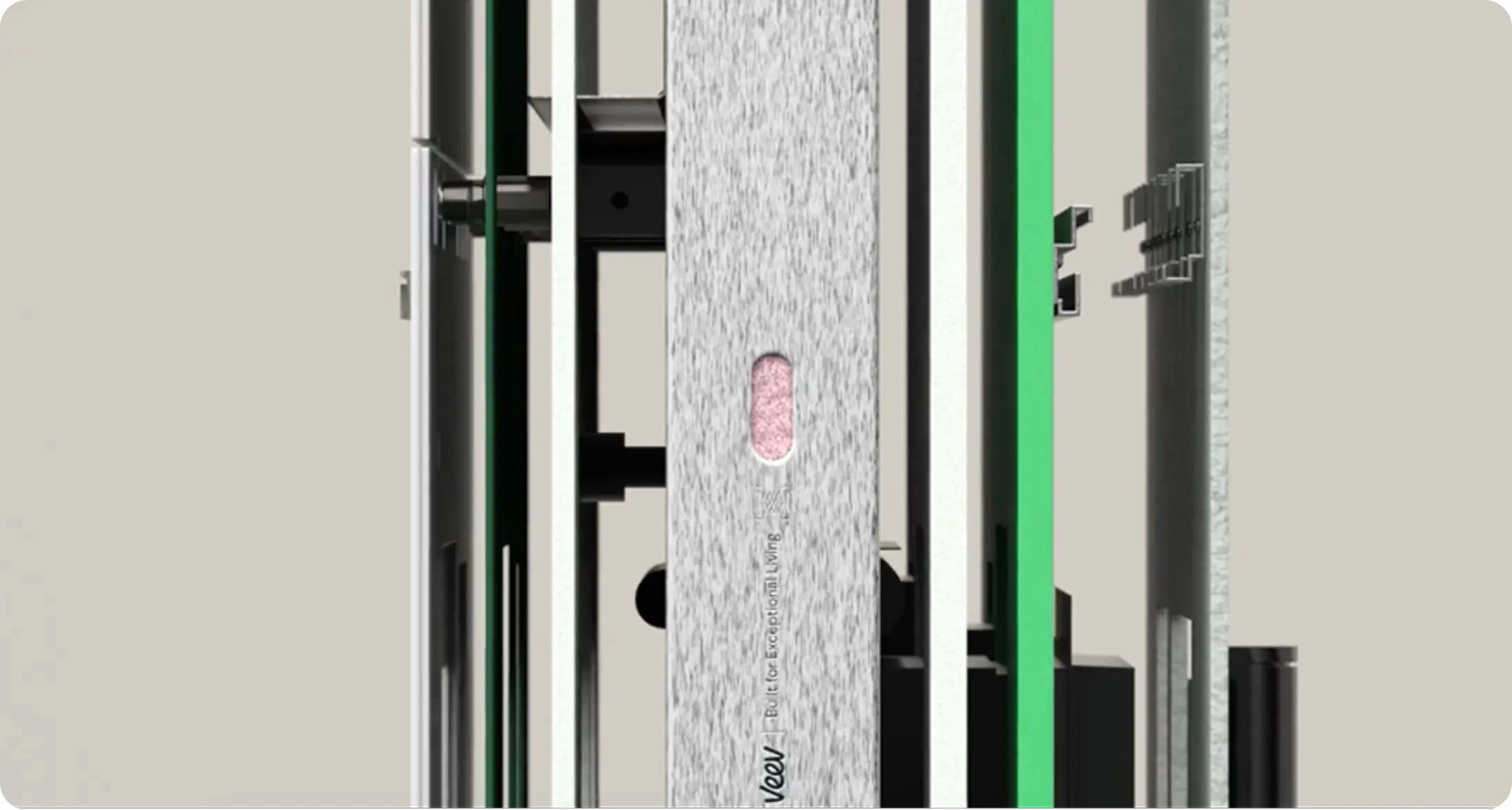
Smart Home Integration and Temy’s Role
But to bring this futuristic home to life and allow tenants to control it remotely, Veev needed a smart system to let users manage their entire house with just a few taps in the mobile app or voice commands.
Temy’s mission was to connect everything, from the smart panels to the sensors, into a single automated system.
Obstacles
Multi-brand integration
Veev’s smart devices came from different manufacturers, so syncing them into one system was a real puzzle.
Hard to test remotely
With the client’s teams in the US and Israel and Temy’s developers in Ukraine, we had to get creative to test every feature from afar.
Keeping it secure
We had to use cloud infrastructure for future scaling, but ensuring safe communication between the cloud, hub, and devices was challenging.
Have a similar challenge?
We can help!
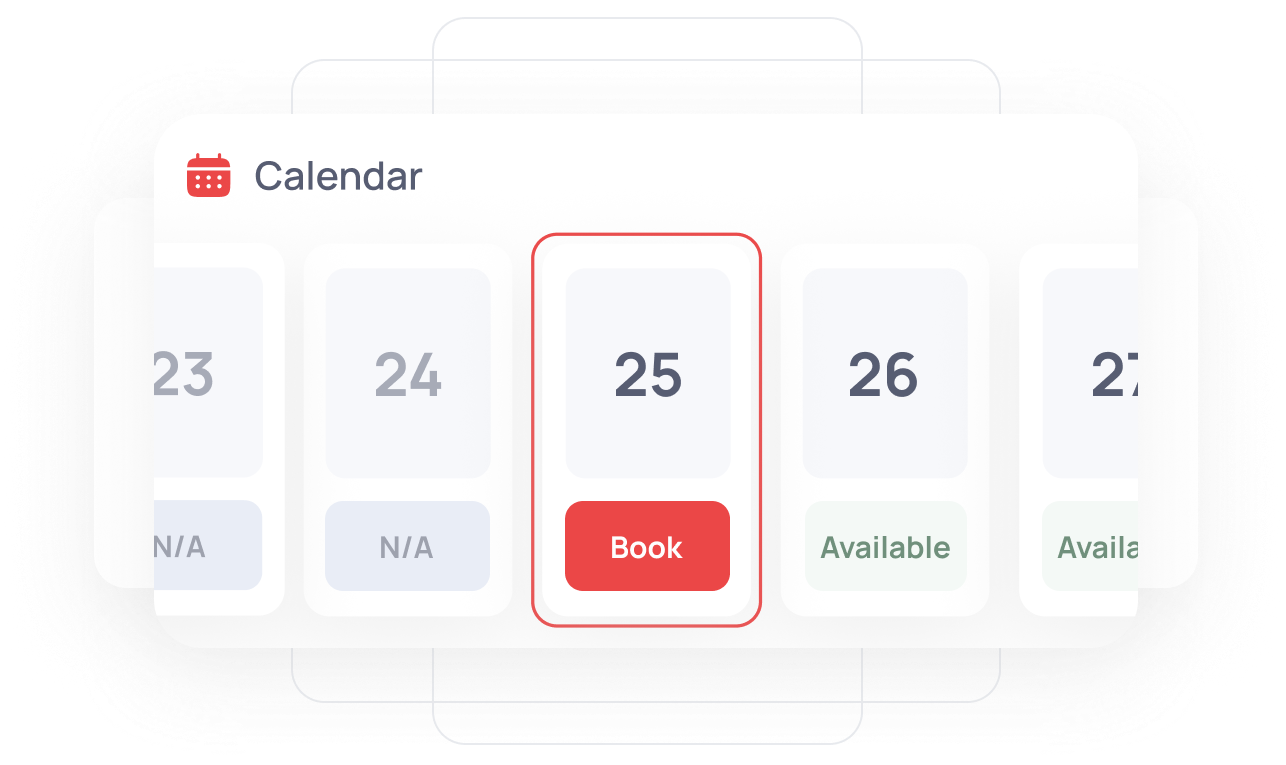
The Solution
Temy brought 10 dedicated experts who turned a prototype into a full-scale system
Veev started with a single Intel NUC and a working prototype that secured early funding. That MVP was just a spark, far from the robust, cloud-based solution now running in hundreds of homes. To evolve, Veev needed full-stack expertise – from AWS and mobile to IoT and testing – and Temy brought that mix of skills.
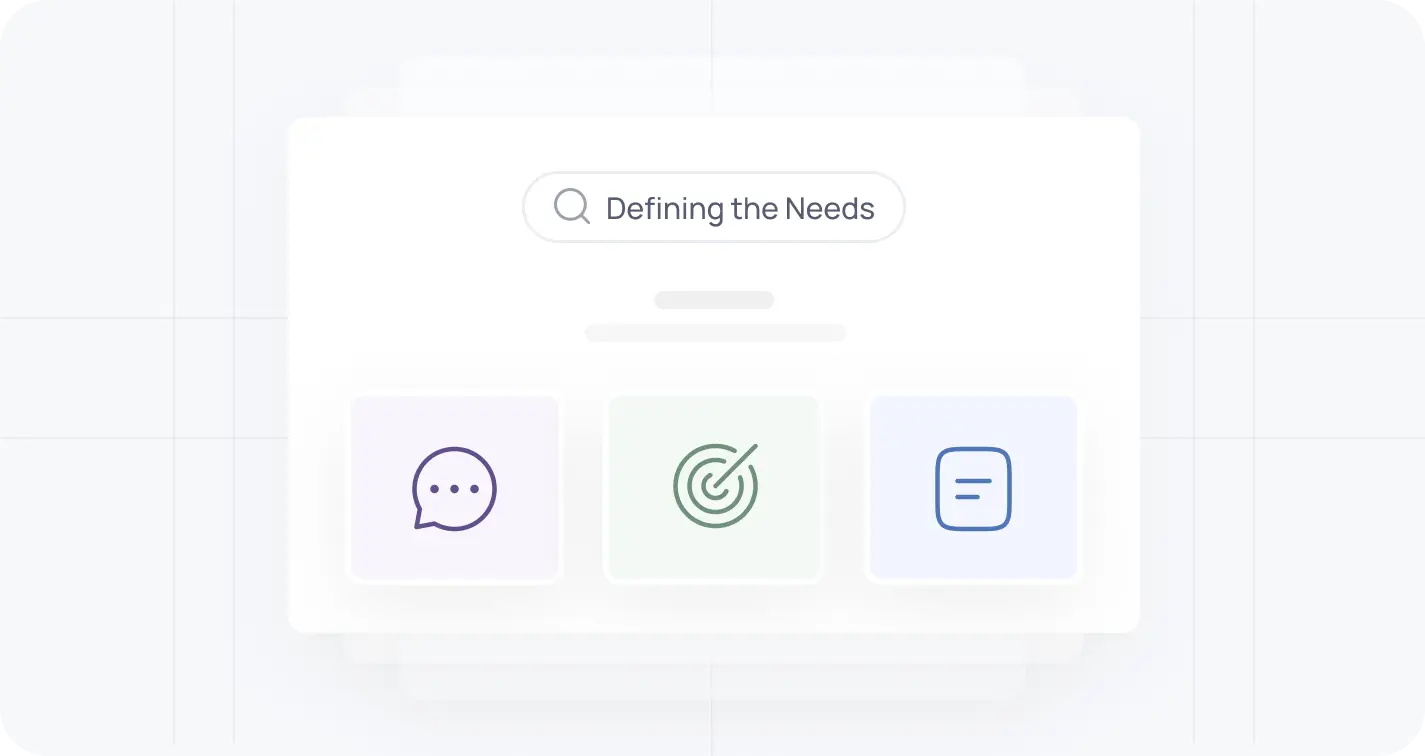
Veev passed us the requirements
Veev handed us over the requirements. Their team conducted research, gathered resident feedback, and outlined the project needs.
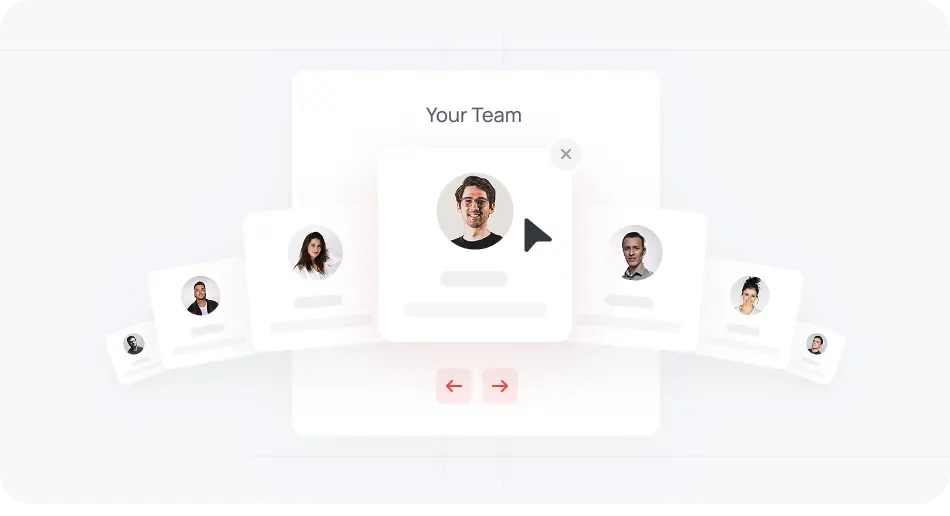
Temy set up a dedicated team
Temy built a dedicated team, starting with a cloud architect and back-end engineer, eventually expanding to 8 engineers plus 2 QA experts.
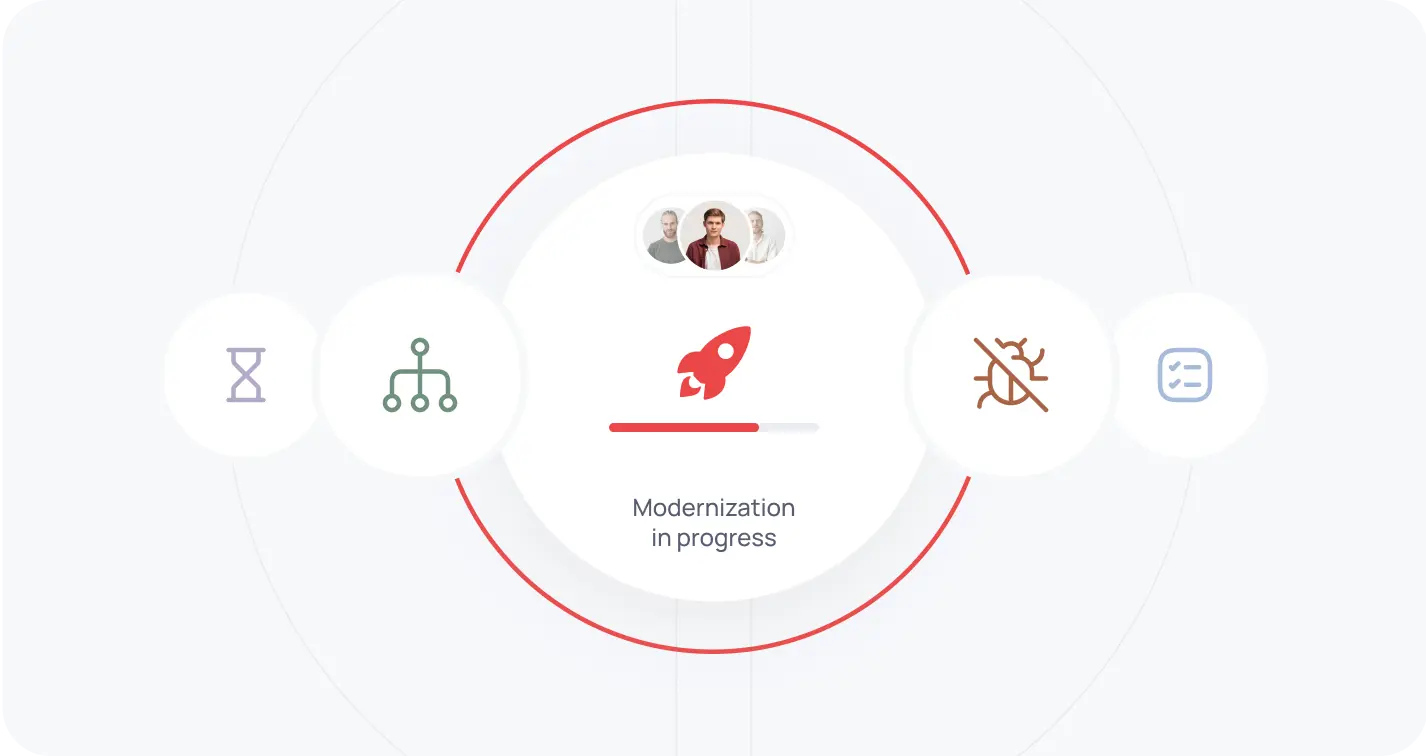
We built & tested each feature
Our team developed each part of the smart home app, while QA engineers teamed up with US-based installers to rigorously test every feature.
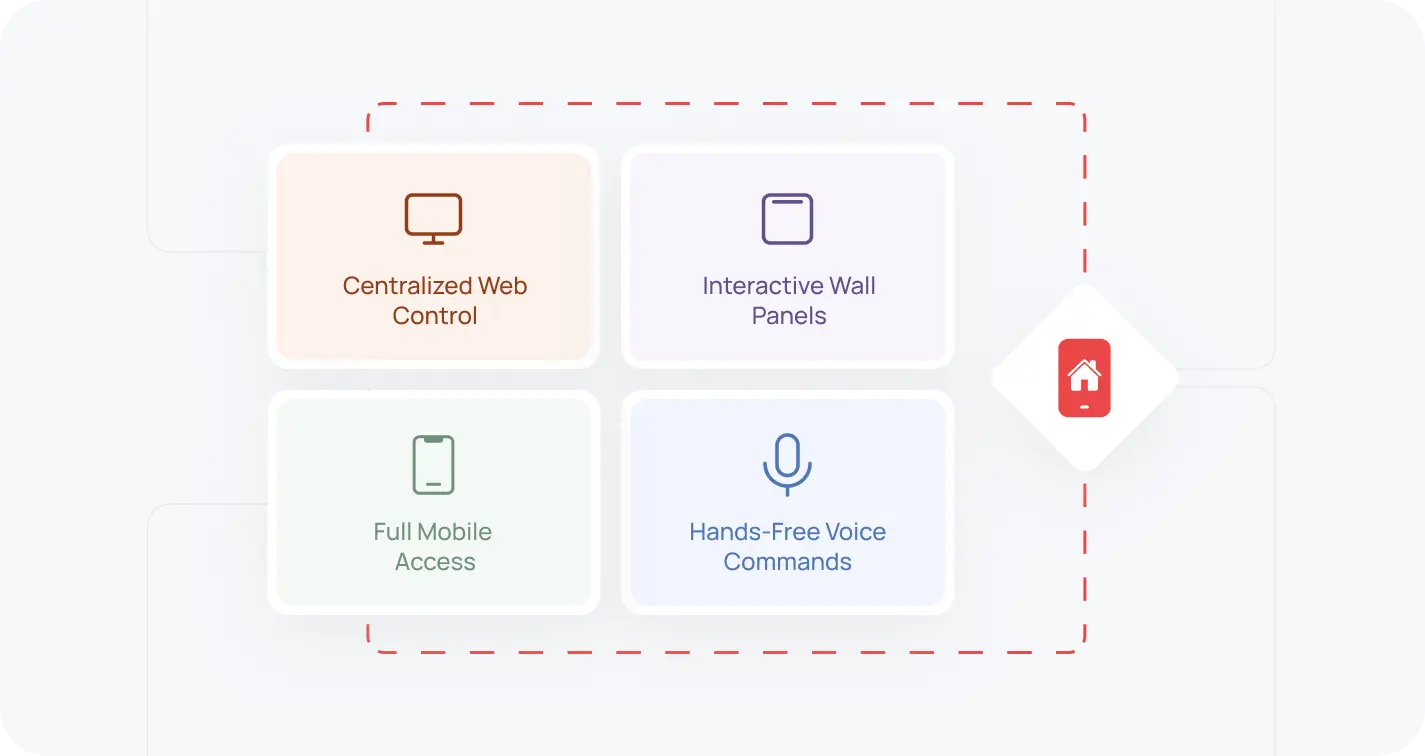
Smart home system released!
Finally, we delivered an automated home system configured via a web-based back office and controlled remotely through touch panels, an app, and Amazon Alexa.
Key project outcomes
- Investments attractedThanks to the combined efforts of Temy and Veev, the company raised $6 million in funding.
- Company valued at $1BAfter launching their innovative system, Veev reached unicorn status with a valuation of $1 billion in 2022.
- All features in one systemTemy helped Veev build a fully automated home system, effortlessly controllable both on-site and remotely.
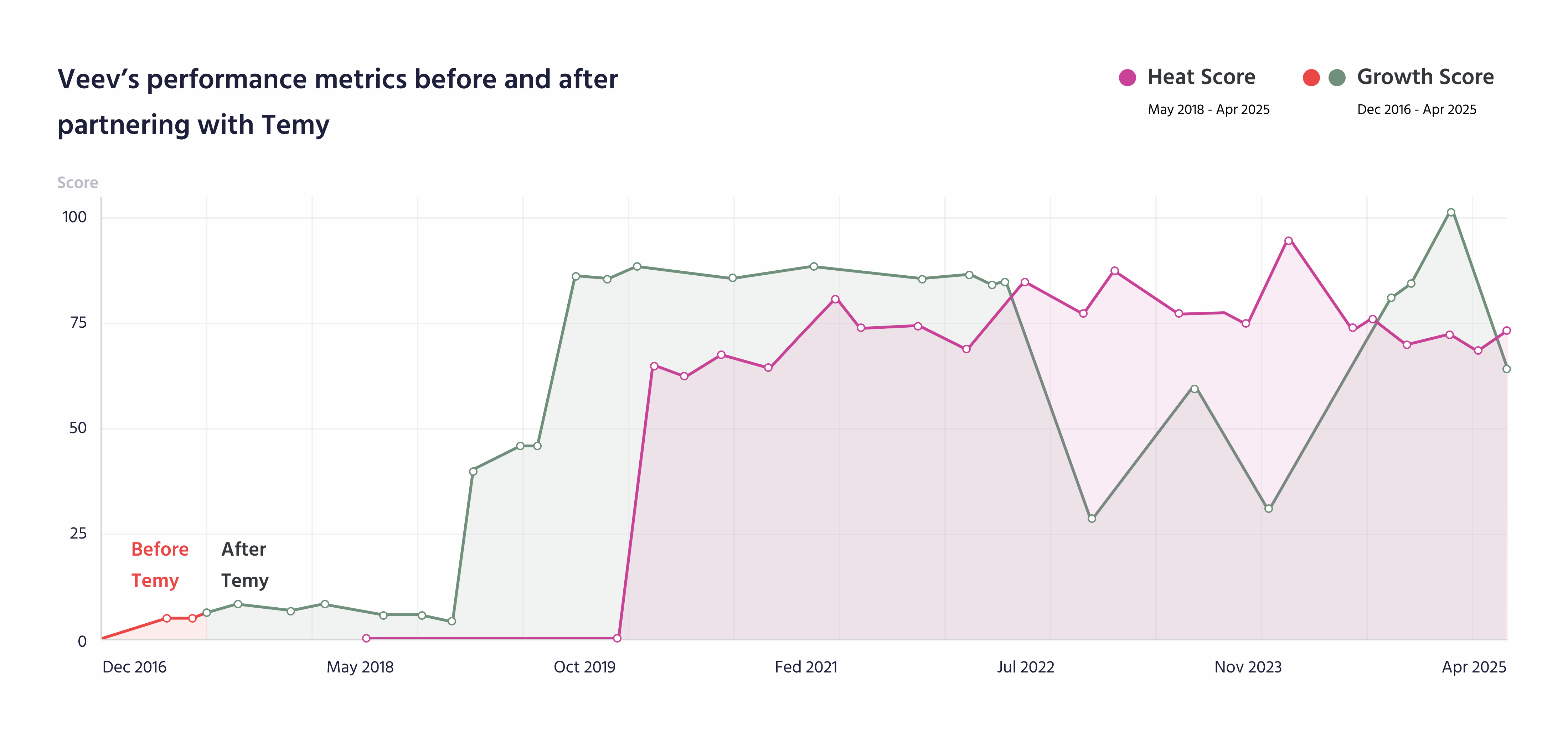
The Solution
How Temy brought climate control, lighting,
door locks, and more into one system
Temy’s Fully Automated Smart Home System
After five years of collaboration and 52 sprints, Temy delivered a seamless, fully automated home system. Now, residents can control everything from home temperature to lights, door locks, and more using their smartphones or Amazon Alexa.
At its core, the system runs on AWS cloud infrastructure, with a local hub ensuring real-time syncing between devices and user apps.
The key components include the local hub, touch panels, mobile app, voice control, and web-based back office.
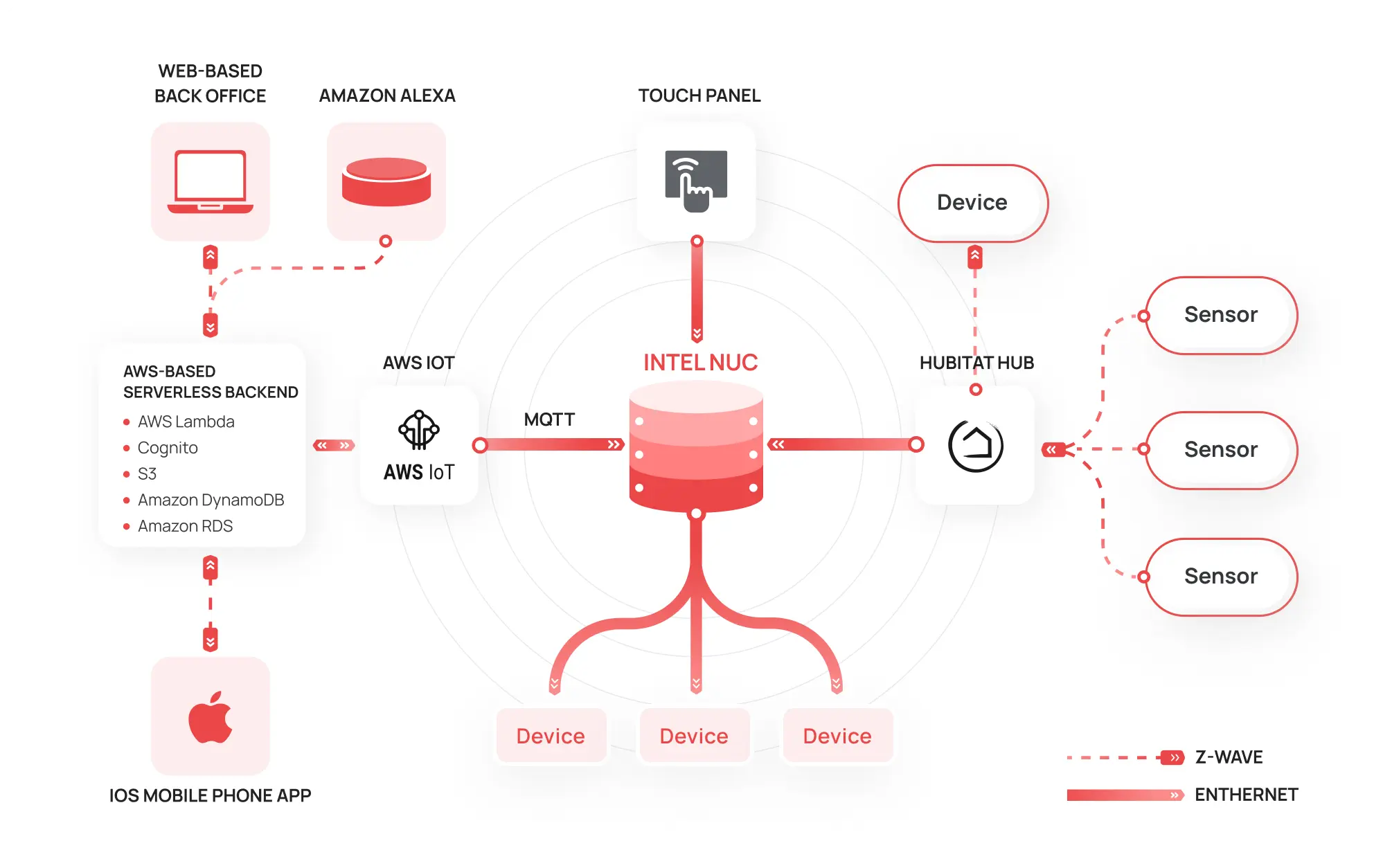
Temy builds the foundation for the future smart home system
Every smart home needs a brain. Temy developed a local hub for all devices to communicate smoothly, even if the Internet goes down. Built on Intel’s NUC with Mosquitto MQTT and Java, this plug-and-play system streamlined installation, eliminating manual configurations and syncing issues.
Our team connected the essentials: lights, climate, security, and more
With the foundation in place, our experts integrated core features:
- Lights. Users can adjust brightness, change color temperature, or schedule lights to turn on automatically. Motion sensors? Also covered.
- Climate control. Smart thermostats and humidity sensors keep every room comfortable with individual climate settings. If humidity levels rise in the bathroom, fans kick in automatically to maintain the right balance.
- Security. A connected door lock and video doorbell let homeowners see who’s at the door, chat with visitors, and unlock it.
- Shades. Smart window shades adjust automatically with sunrise, sunset, or room occupancy, giving homeowners perfect privacy and energy savings.
We made control effortless with touch panels, an app, and voice commands
Now that the home could think, it needed an easy way for users to interact with it, so we implemented 3 different options:
- Wall Switch touch panels were mounted in every room. These Android-powered panels let users tweak settings with a tap, even without Wi-Fi.
- A mobile app that lets users control their home no matter where they are.
- Alexa integration for hands-free living. “Alexa, dim the lights.” “Alexa, set the temperature to 72°F.” Voice commands made automation feel like magic.
The team brought the features together into a web-based back office
To make sure everything runs like clockwork, Temy built a web-based control center. Installers and support teams can set up floor plans, add new residents, and monitor system health remotely.
The Result
A Smarter, Simpler Home
Bringing all these pieces together was no small feat, but Temy pulled it off. Now, lights, climate,
and security are all working together in perfect harmony, making life easier for homeowners every day.
Managing smart home devices meant juggling multiple apps and remotes
A single system controls lights, climate, security, and more
Users had limited control outside the home
The mobile app + Alexa integration let users control everything remotely
Security was an afterthought
Smart locks + video doorbell allow remote access and real-time visitor interactions
No way for installers or support teams to monitor system health
Web back office lets teams configure homes, add users, and provide support